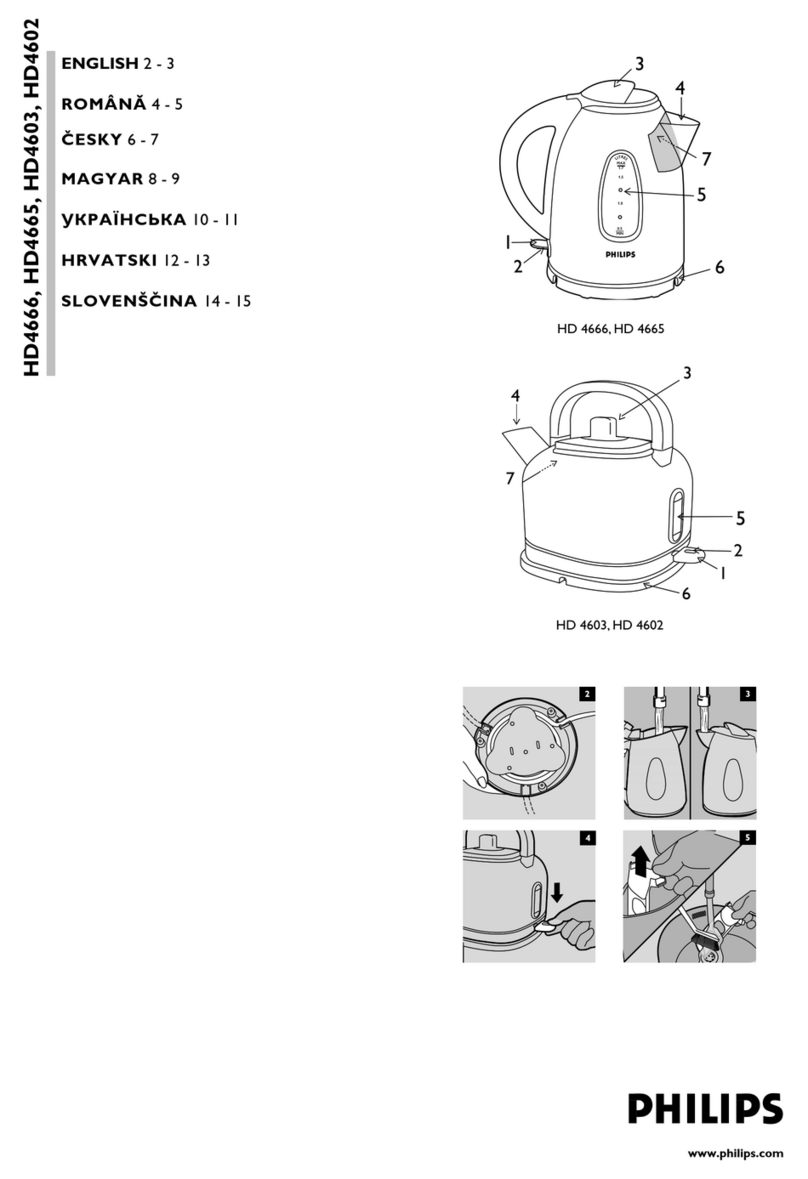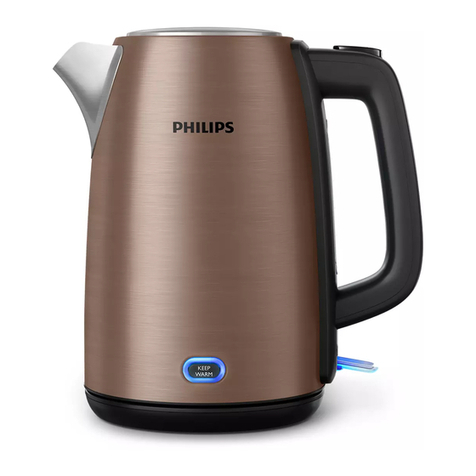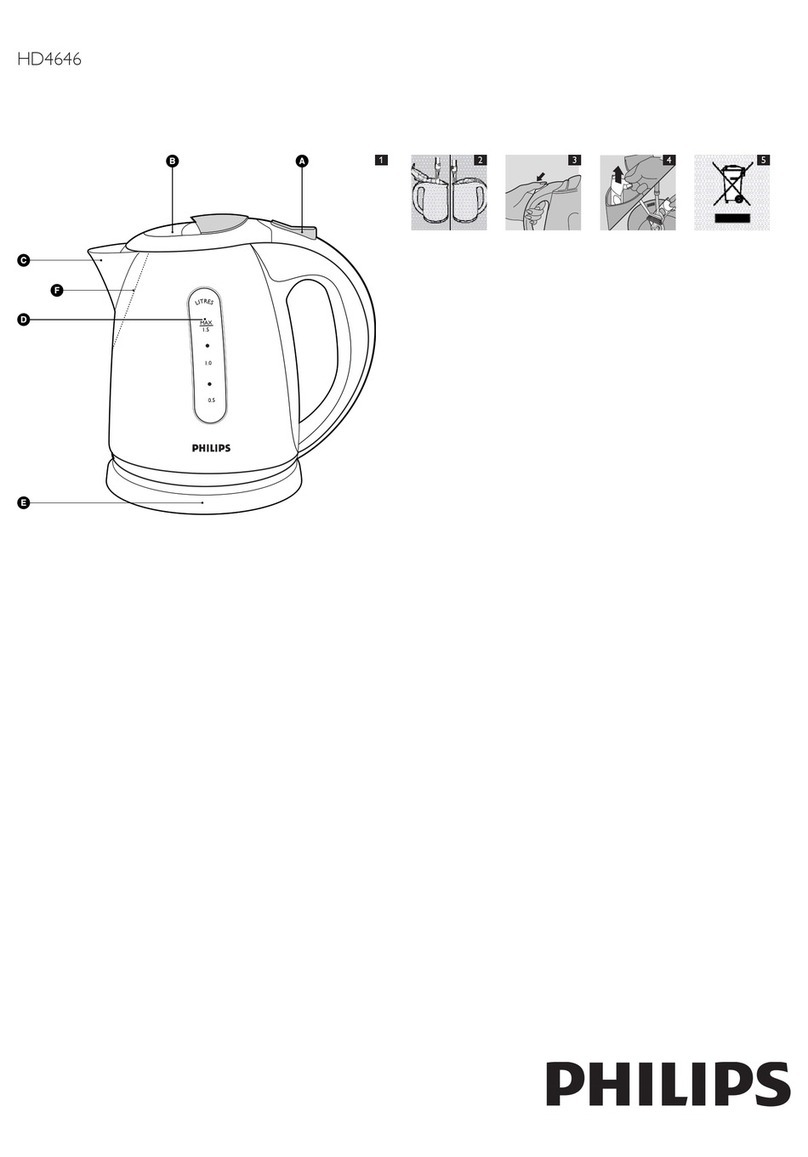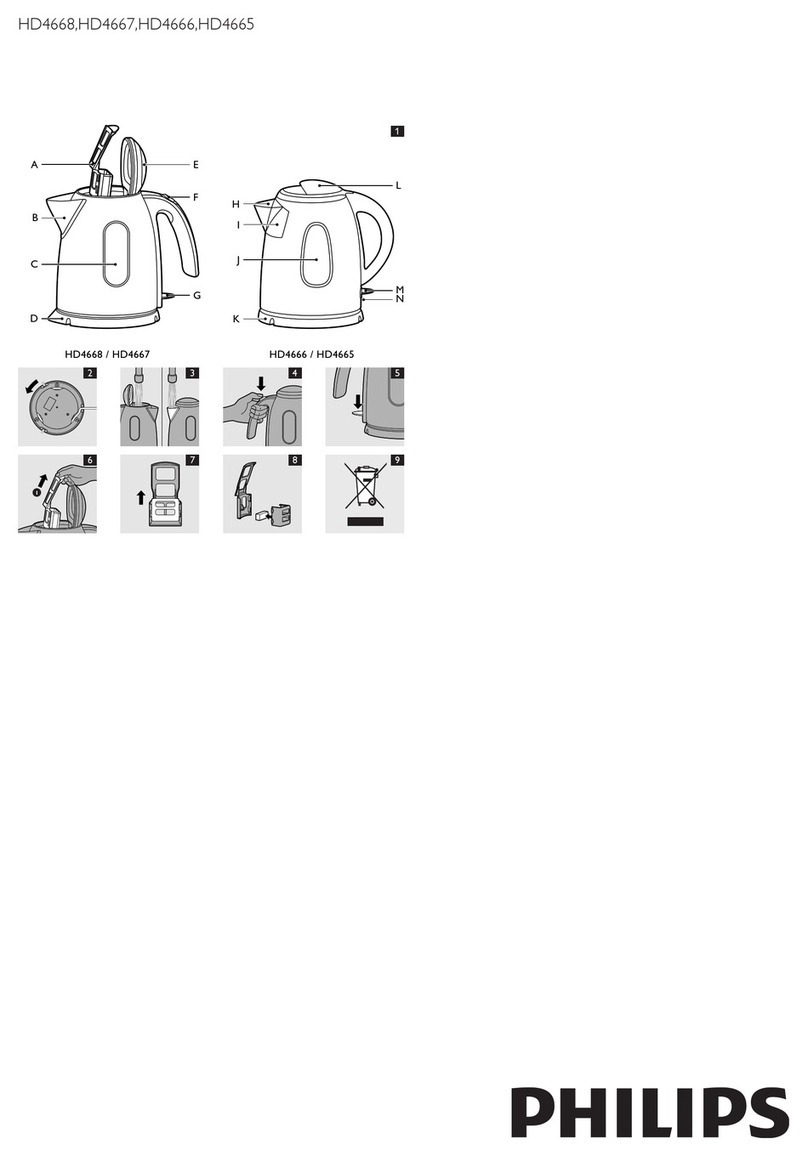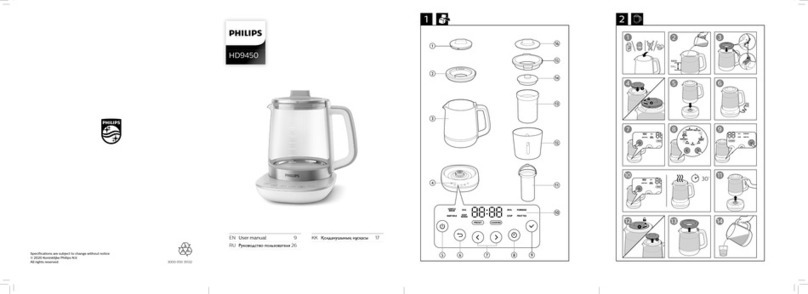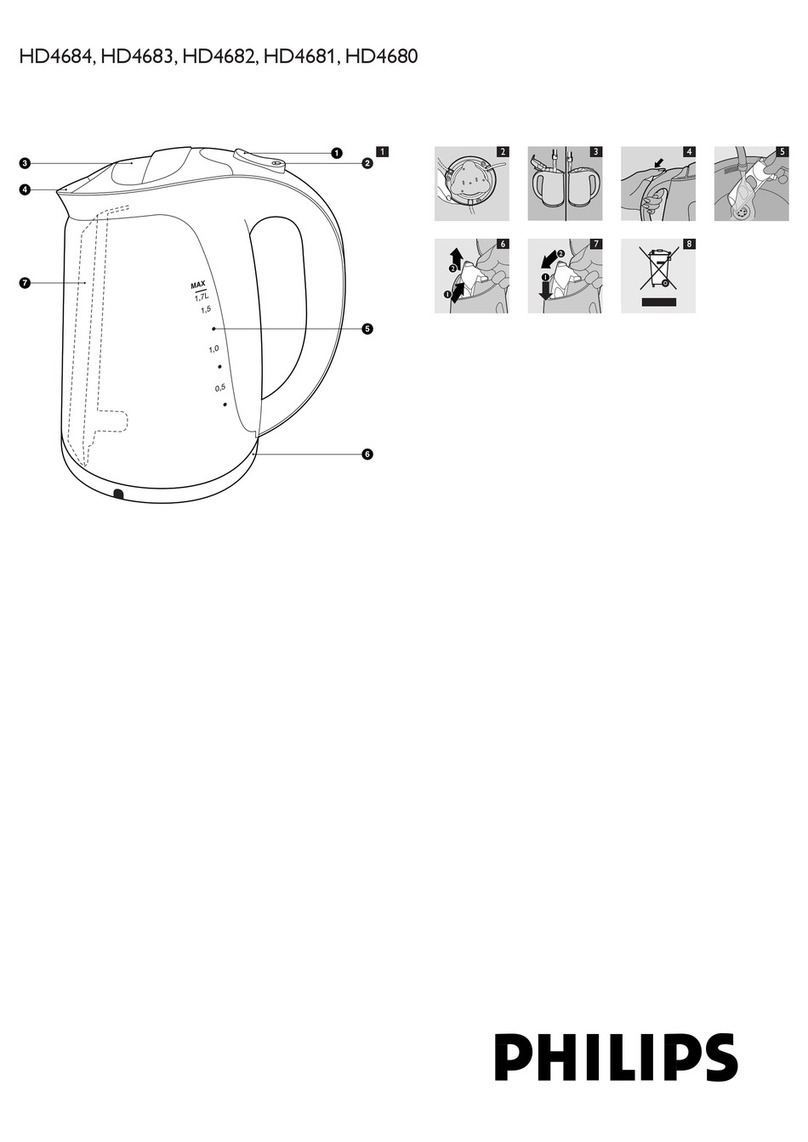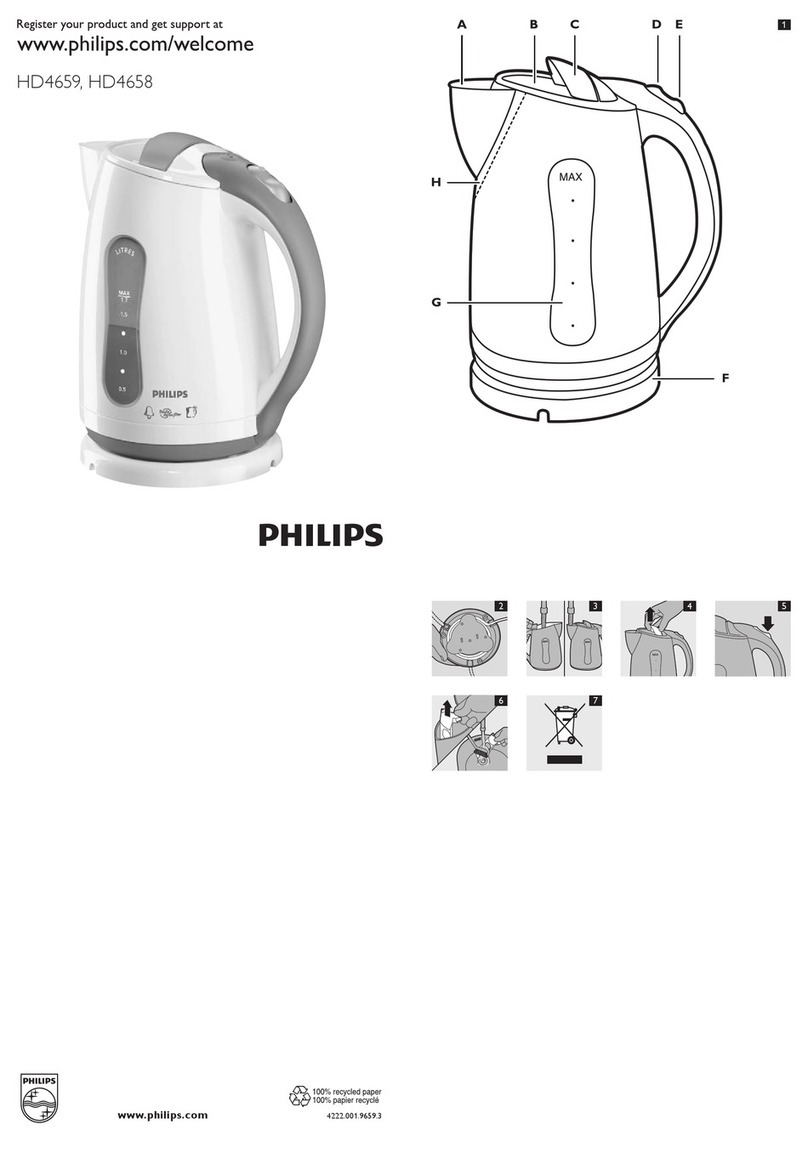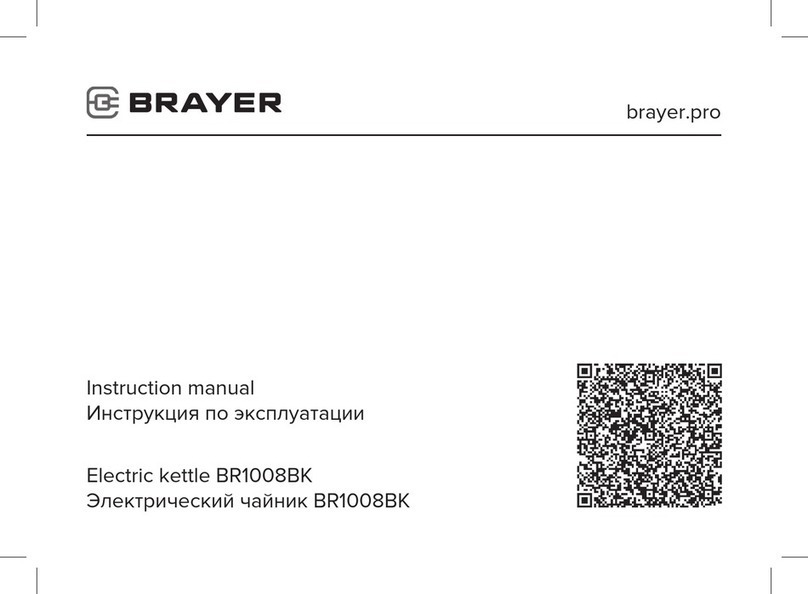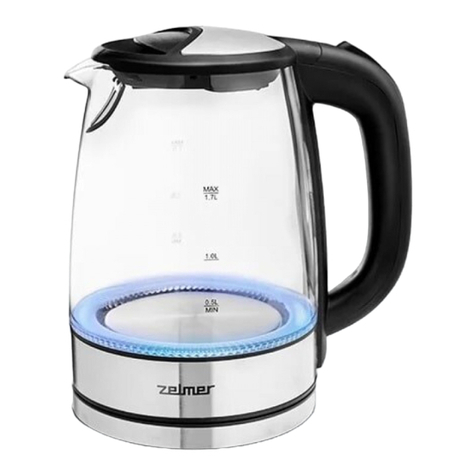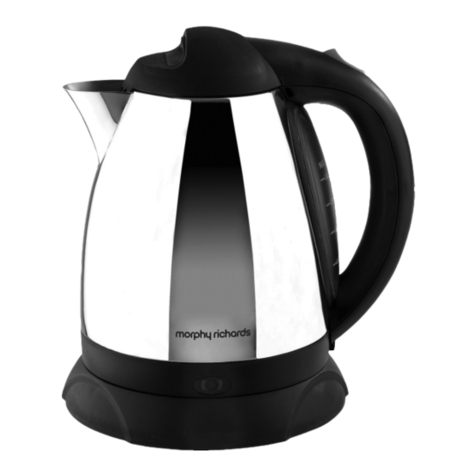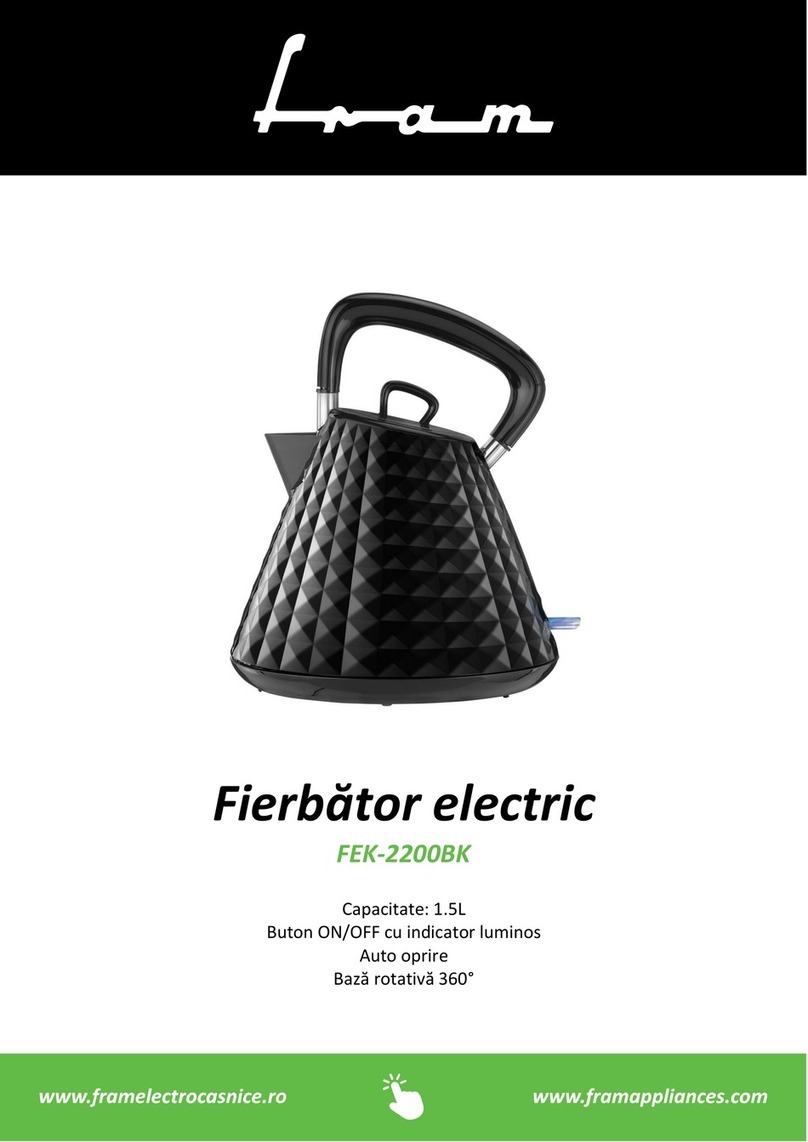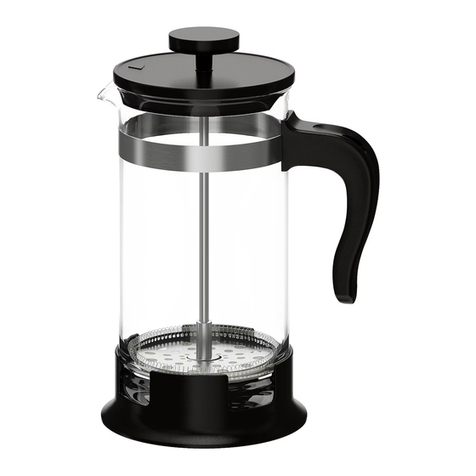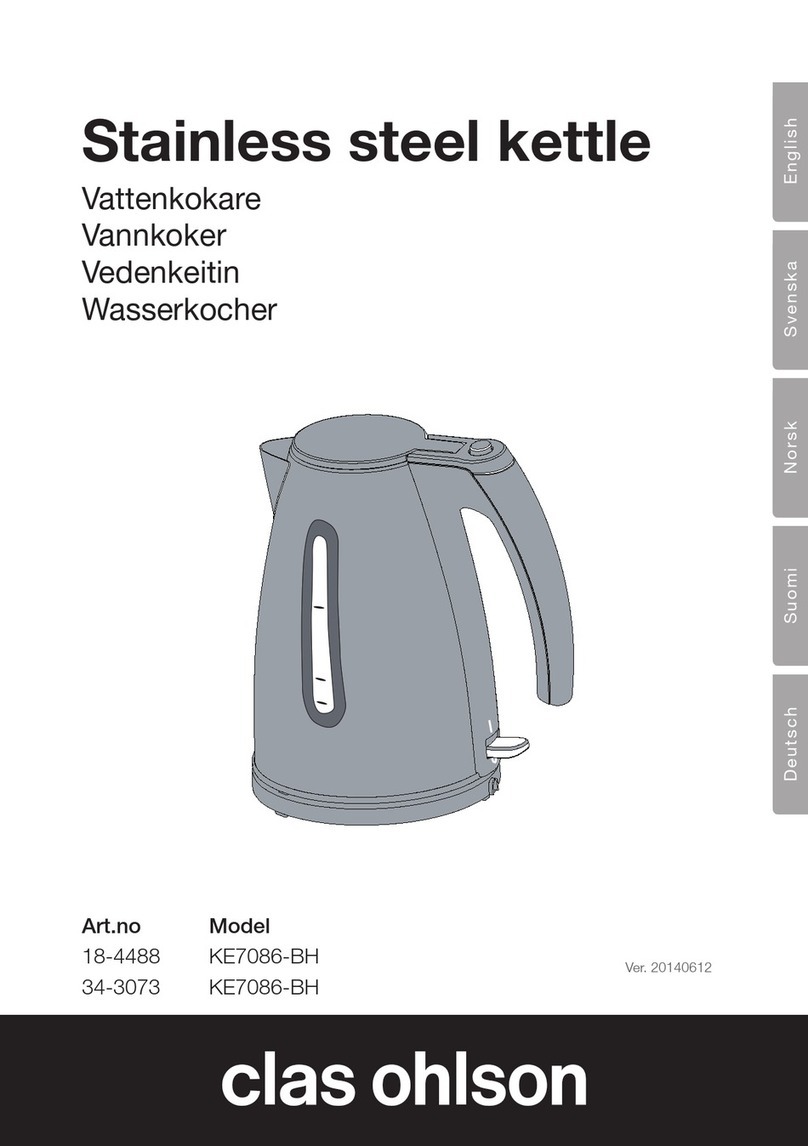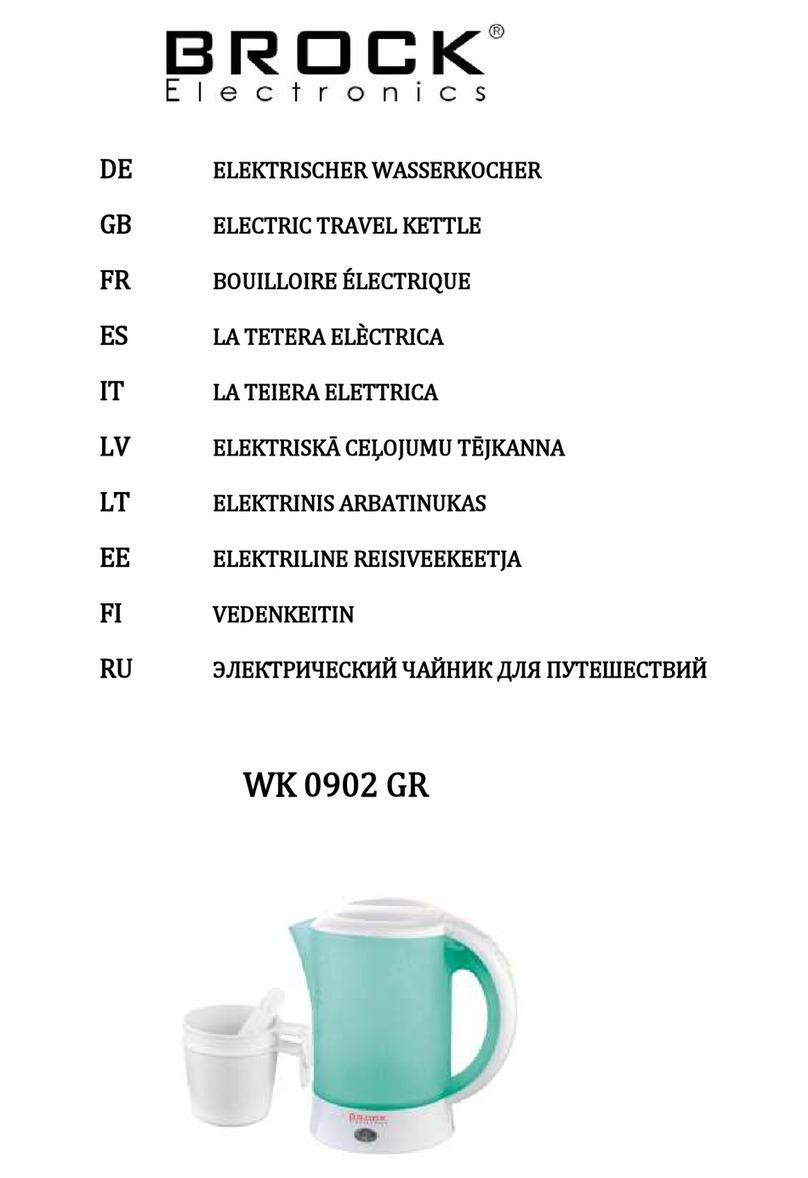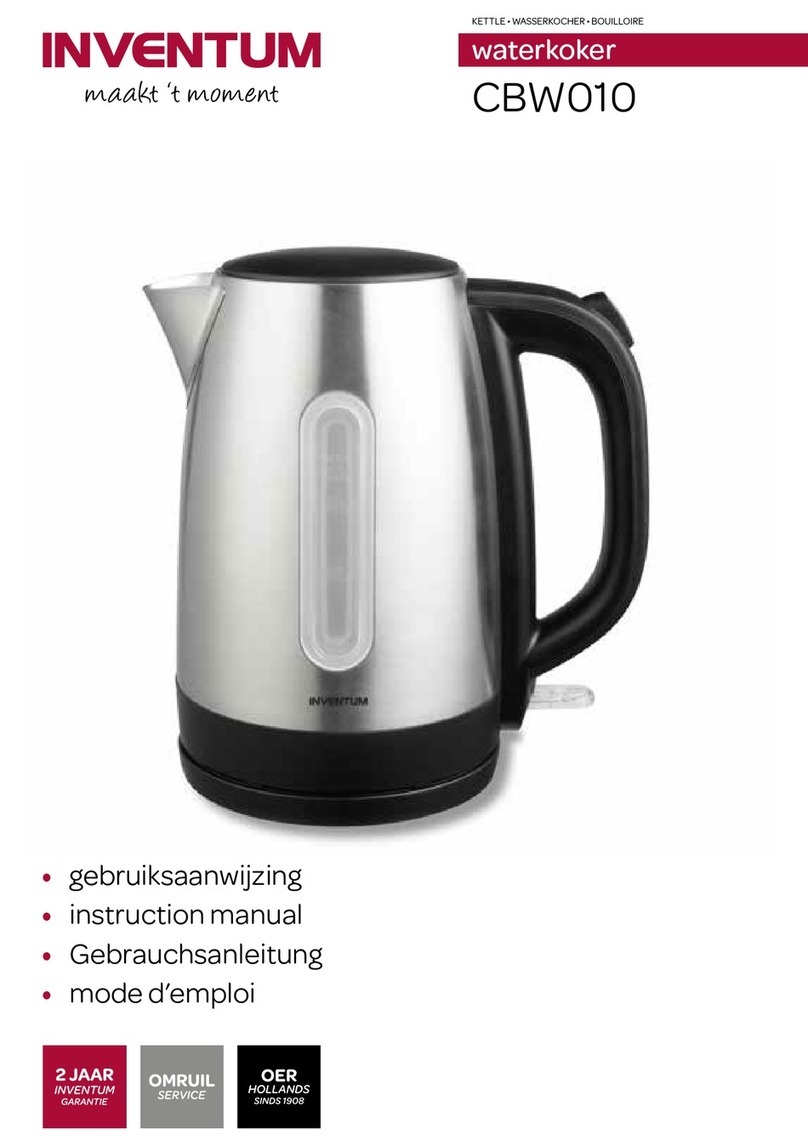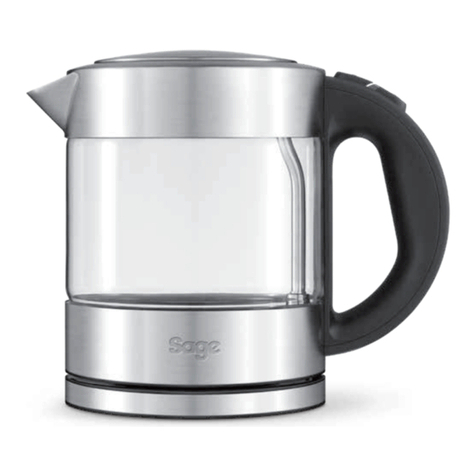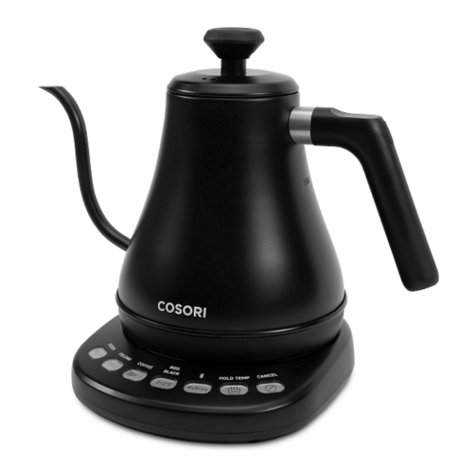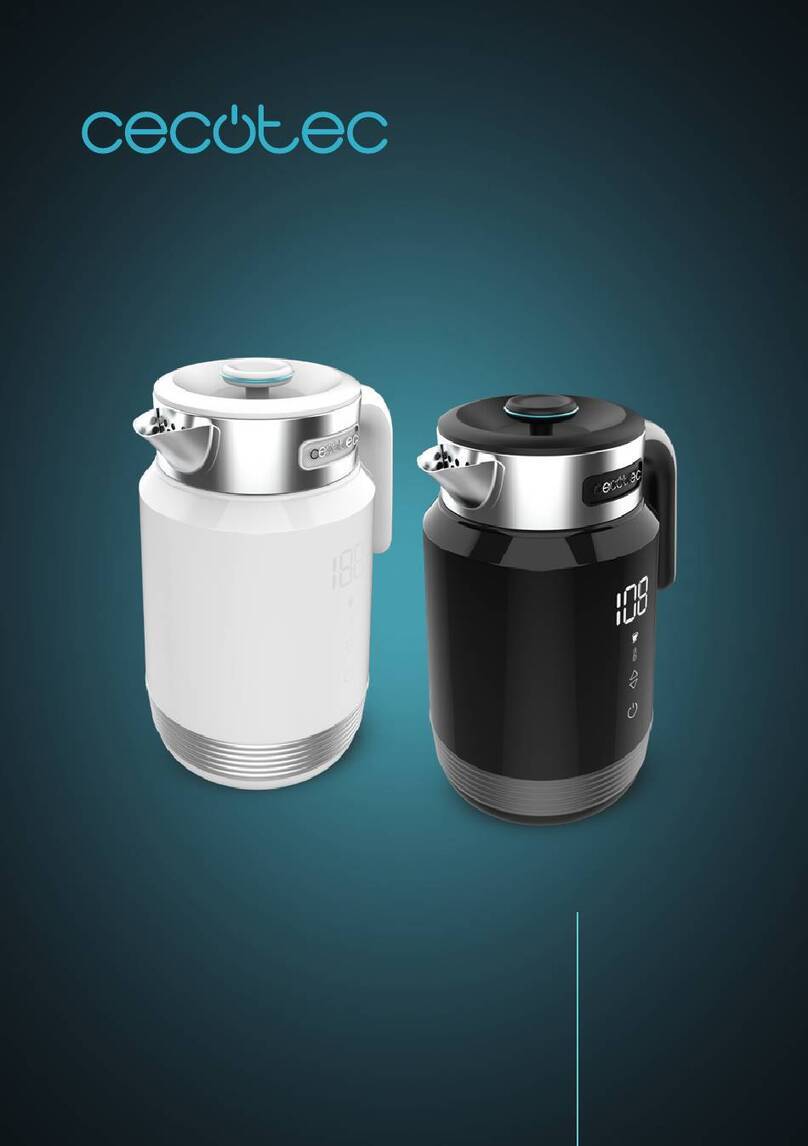ESPAÑOL
IntroducciónIIIIIIIIIIIIIIIIIIIIIIIIIIIIIIIIIIIIIIIIIIIIIIIIIIIIIIIIIIIIIIIIIIIIIIIIIIIIIIIIIIIIIIIIIIIIIIIIIIIIIIIIIIIIIIIIIIIIIIIIIIIIIIIIIIIIIIIIIIIIIIIIIIIIIIIIIIIIIIIIIIIIIIIIIIIIIIIIIIIIIIIIIIIIIIIIIIIIII
Estimado cliente: Felicidades por adquirir la nueva hervidora Glass de Philips.
El cuerpo de la nueva hervidora Glass de Philips está hecho de cristal. Esto da a su
hervidora un atractivo aspecto transparente y hace que hervir agua se convierta en
una experiencia fascinante. Esta hervidora es además de bajo consumo y mantiene
las bebidas libres de cal.
ImportanteIIIIIIIIIIIIIIIIIIIIIIIIIIIIIIIIIIIIIIIIIIIIIIIIIIIIIIIIIIIIIIIIIIIIIIIIIIIIIIIIIIIIIIIIIIIIIIIIIIIIIIIIIIIIIIIIIIIIIIIIIIIIIIIIIIIIIIIIIIIIIIIIIIIIIIIIIIIIIIIIIIIIIIIIIIIIIIIIIIIIIIIIIIIIIIIIIIIIIIIIIII
Antes de utilizar la hervidora, lea detenidamente estas instrucciones y consérvelas
por si necesitara consultarlas en el futuro.
◗Esta hervidora está diseñada únicamente para hervir agua. No eche ningún otro
ingrediente en el aparato ya que podría provocar situaciones peligrosas.
◗Antes de conectar el aparato, compruebe si el voltaje indicado en la hervidora
se corresponde con el de su hogar.
◗Nunca llene la hervidora por encima de la indicación de nivel máximo. Si la
hervidora de agua se llena en exceso, existe el riesgo de que el agua hirviendo
salga despedida por la boquilla.
◗Nunca llene la hervidora por debajo de la indicación de nivel mínimo para
evitar que hierva en seco.
◗Puede aparecer alguna condensación sobre la base de la hervidora de agua.
Esto es perfectamente normal y no significa que el aparato esté defectuoso.
◗Dependiendo de la dureza del agua de su zona, pueden aparecer pequeñas
manchas en el elemento calefactor de la hervidora cuando la utilice. Esto se
debe a la cal que se forma en el elemento calefactor y en el interior de la
hervidora con el paso del tiempo. Cuanto más dura sea el agua, más rápido se
formará la cal. Puede aparecer cal de diferentes colores. Aunque la cal no es
dañina para la salud, la acumulación excesiva de cal puede afectar al
funcionamiento de la hervidora. Por favor, siga las instrucciones que se adjuntan
en este folleto para descalcificar la hervidora.
◗Mantenga la hervidora y el cable lejos del alcance de los niños y no les deje
jugar con el aparato. Evite que los niños tiren del cable. No deje el cable
colgando de la encimera.
El cable que sobre puede enrollarlo en la base de la hervidora.
◗El agua hirviendo puede causar quemaduras graves.Tenga cuidado cuando haya
agua caliente en la hervidora.
◗Tenga cuidado al quitar la tapadera justo después de que el agua haya hervido,
ya que saldrá vapor caliente de la hervidora.
◗Utilice la hervidora sólo con su base original.
◗No coloque la hervidora sobre una superficie caliente.
◗No sumerja la hervidora o su base en agua u otro líquido.
◗No utilice nunca la hervidora si la clavija, el cable o el aparato están dañados. Si
la hervidora está deteriorada, sólo la podrán reparar Philips o un centro de
servicio técnico de Philips, ya que se necesitan herramientas y/o piezas
especiales.
◗Evite tocar el cristal, ya que la hervidora se calienta cuando está en
funcionamiento.Toque únicamente el interruptor de Marcha/Parada y sujete la
hervidora por el asa.
Descripción general (fig. 1)IIIIIIIIIIIIIIIIIIIIIIIIIIIIIIIIIIIIIIIIIIIIIIIIIIIIIIIIIIIIIIIIIIIIIIIIIIIIIIIIIIIIIIIIIIIIIIIIIIIIIIIIIIIIIIIIIIIIIIIIIIIIIIIIIIIIIIII
AInterruptor de Marcha/Parada (On/Off) I
BLámpara piloto
CTapa de seguridad
DBoquilla de salida
EIndicador del nivel de agua
FBase
GFiltro antical
Protección contra el calentamiento en secoIIIIIIIIIIIIIIIIIIIIIIIIIIIIIIIIIIIIIIIIIIIIIIIIIIIIIIIIIIII
El elemento calefactor de la hervidora está protegido por un dispositivo de
desconexión de seguridad. El dispositivo desconecta automáticamente la hervidora si
se conecta accidentalmente cuando no tiene agua o agua suficiente. En este caso, la
lámpara piloto parpadeará y la hervidora se apagará automáticamente al cabo de
unos 5 minutos. Si esto ocurriera, retire la hervidora de la base para volver a activar
la protección contra el calentamiento en seco. Después, podrá volver a utilizar la
hervidora de nuevo.
Cómo usar la hervidora de aguaIIIIIIIIIIIIIIIIIIIIIIIIIIIIIIIIIIIIIIIIIIIIIIIIIIIIIIIIIIIIIIIIIIIIIIIIIIIIIIIIIIIIIIIIIIIIIIIIIIIIIIIIIIIIIII
1Coloque la base de la hervidora sobre una superficie plana y enchufe el
aparato a la red.
2Puede llenar la hervidora por la boquilla o quitando la tapadera.
Si decide quitar la tapadera, presione a la vez los dos botones de liberación de la
tapadera y levántela.
3Coloque la hervidora sobre la base.
Si quita la tapadera, colóquela en la apertura y encájela.
Oirá un clic.
4Presione el interruptor de Marcha/Parada.
- La hervidora empieza a calentarse.
- Se enciende la lámpara piloto (fig 2).
- La hervidora se apaga automáticamente cuando el agua ha alcanzado su punto
de ebullición.
5Si presiona el interruptor de Marcha/Parada (On/Off), puede parar el proceso
de ebullición.
Cuidado: el cristal de la hervidora se calienta
LimpiezaIIIIIIIIIIIIIIIIIIIIIIIIIIIIIIIIIIIIIIIIIIIIIIIIIIIIIIIIIIIIIIIIIIIIIIIIIIIIIIIIIIIIIIIIIIIIIIIIIIIIIIIIIIIIIIIIIIIIIIIIIIIIIIIIIIIIIIIIIIIIIIIIIIIIIIIIIIIIIIIIIIIIIIIIIIIIIIIIIIIIIIIIIIIIIIIIIIIIIIIIIIIIIIIIIIIIII
1Desenchufe el aparato de la red
2Limpie el aparato por fuera con un paño húmedo.
3Limpie la tapadera y el filtro antical con agua tibia y un poco de detergente o
en el lavavajillas.
4Para limpiar el interior de la hervidora, siga las instrucciones del capítulo
"Cómo descalcificar".
No utilice ningún agente limpiador abrasivo, desengrasantes, etc. para
limpiar la hervidora.
No sumerja la hervidora o su base en agua u otro líquido.
Cómo descalcificarIIIIIIIIIIIIIIIIIIIIIIIIIIIIIIIIIIIIIIIIIIIIIIIIIIIIIIIIIIIIIIIIIIIIIIIIIIIIIIIIIIIIIIIIIIIIIIIIIIIIIIIIIIIIIIIIIIIIIIIIIIIIIIIIIIIIIIIIIIIIIIIIIIIIIIIIIIIIIIIIIIIIIIIIII
Si elimina la cal de forma regular, alargará la vida útil de la hervidora.
En caso de uso normal (hasta 5 veces al día):
- Una vez al mes si utiliza agua dura (es decir, con una dureza superior a
18° DH);
- Una vez cada tres meses si utiliza agua blanda (es decir, con una dureza de hasta
18° DH).
Consulte a la compañía suministradora de agua para obtener información sobre la
dureza del agua en su región.
Puede que desee descalcificar la hervidora más a menudo para que siempre esté
perfecta.
1Llene la hervidora con agua hasta tres cuartas partes de la indicación de nivel
máximo y presione el interruptor de Marcha/Parada.
2Cuando la hervidora se haya apagado automáticamente, añada vinagre blanco
(8% ácido acético) o un descalcificador adecuado hasta la indicación de nivel
máximo.
3Deje la solución en la hervidora durante toda la noche.
4Vacíe la hervidora y enjuague bien el interior.
5Repita este proceso si aún queda cal en la hervidora.
Cómo limpiar el filtroIIIIIIIIIIIIIIIIIIIIIIIIIIIIIIIIIIIIIIIIIIIIIIIIIIIIIIIIIIIIIIIIIIIIIIIIIIIIIIIIIIIIIIIIIIIIIIIIIIIIIIIIIIIIIIIIIIIIIIIIIIIIIIIIIIIIIIIIIIIIIIIIIIIIIIIIIIIII
La cal no es perjudicial para la salud y puede presentarse en diferentes colores, pero
puede proporcionar a las bebidas cierto sabor a polvo. El filtro antical evita que las
partículas de cal lleguen a la bebida. Limpie con regularidad el filtro.
1Quite la tapadera.
Puede quitar la tapadera presionando simultáneamente los dos botones de
liberación y levantando la tapadera.
2Saque el filtro.
Puede quitar el filtro tirando con suavidad del soporte (figura 3).
3Limpie el filtro enjuagándolo debajo del grifo. Si fuera necesario, puede utilizar
un cepillo de nylon suave.
El filtro antical puede lavarse también en el lavavajillas.
También puede limpiar el filtro descalcificándolo de la misma forma que la hervidora.
4Deje en remojo el filtro en una taza con agua tibia y vinagre o con un
descalcificador adecuado.
5Saque el filtro de la taza y escúrralo.
SustituciónIIIIIIIIIIIIIIIIIIIIIIIIIIIIIIIIIIIIIIIIIIIIIIIIIIIIIIIIIIIIIIIIIIIIIIIIIIIIIIIIIIIIIIIIIIIIIIIIIIIIIIIIIIIIIIIIIIIIIIIIIIIIIIIIIIIIIIIIIIIIIIIIIIIIIIIIIIIIIIIIIIIIIIIIIIIIIIIIIIIIIIIIIIIIIIIIIIIIIIIIIIIII
Cable
Si el cable de la hervidora está dañado, debe ser sustituido siempre por un centro
de servicio autorizado de Philips.
Filtro antical
Los filtros de repuesto para la hervidora Glass de Philips están disponibles en su
centro de servicio de Philips con el modelo HD4979.
Información y servicioIIIIIIIIIIIIIIIIIIIIIIIIIIIIIIIIIIIIIIIIIIIIIIIIIIIIIIIIIIIIIIIIIIIIIIIIIIIIIIIIIIIIIIIIIIIIIIIIIIIIIIIIIIIIIIIIIIIIIIIIIIIIIIIIIIIIIIIIIIIIIIIIIIIIIIIIIIII
Si necesita información o si tiene algún problema, visite la página Web de Philips en
www.philips.com o póngase en contacto con el Servicio Philips de Atención al
Cliente de su país (encontrará el número de teléfono en el folleto de la Garantía
Mundial). Si en su país no hay Servicio Philips de Atención al Cliente, diríjase a su
distribuidor local Philips o póngase en contacto con el Service Department of Philips
Domestic Appliances and Personal Care BV.
ITALIANO
IntroduzioneIIIIIIIIIIIIIIIIIIIIIIIIIIIIIIIIIIIIIIIIIIIIIIIIIIIIIIIIIIIIIIIIIIIIIIIIIIIIIIIIIIIIIIIIIIIIIIIIIIIIIIIIIIIIIIIIIIIIIIIIIIIIIIIIIIIIIIIIIIIIIIIIIIIIIIIIIIIIIIIIIIIIIIIIIIIIIIIIIIIIIIIIIIIIIIIIIIIII
Caro Cliente, ci congratuliamo con lei per aver acquistato il nuovo Bollitore Glass di
Philips.
L'intero corpo del vostro nuovo Bollitore Glass di Philips è realizzato in vetro, per
conferire all'apparecchio uno splendido look trasparente e per trasformare
l'ebollizione dell'acqua in un evento affascinante. Questo bollitore permette anche di
risparmiare energia e vi impedirà di bere bevande con il sapore del calcare.
ImportanteIIIIIIIIIIIIIIIIIIIIIIIIIIIIIIIIIIIIIIIIIIIIIIIIIIIIIIIIIIIIIIIIIIIIIIIIIIIIIIIIIIIIIIIIIIIIIIIIIIIIIIIIIIIIIIIIIIIIIIIIIIIIIIIIIIIIIIIIIIIIIIIIIIIIIIIIIIIIIIIIIIIIIIIIIIIIIIIIIIIIIIIIIIIIIIIIIIIIIIIIIII
Prima di usare l'apparecchio, vi preghiamo di leggere con attenzione le istruzioni e di
conservarle per eventuali riferimenti futuri.
◗Il bollitore è stato realizzato unicamente per far bollire l'acqua. Non mettete altri
ingredienti nell'apparecchio, per evitare di ritrovarvi in situazioni pericolose.
◗Prima di collegare l'apparecchio, controllate che la tensione indicata sul bollitore
corrisponda a quella della rete locale.
◗Non riempite mai il bollitore oltre il livello massimo indicato. Riempiendo troppo
il bollitore, l'acqua bollente potrebbe fuoriuscire dal beccuccio.
◗Non riempite mai il bollitore al di sotto del livello minimo per evitare che
l'apparecchio funzioni a vuoto.
◗Alla base del bollitore potrebbe formarsi un po' di condensa. Si tratta di un
fenomeno del tutto normale e non significa che il bollitore sia difettoso.
◗In base alla durezza dell'acqua nella vostra zona, potrebbero formarsi piccoli
puntini sulla serpentina del bollitore, durante l'uso. Questo fenomeno è il
risultato dell'accumulo di calcare sulla serpentina e, con il passare del tempo,
anche all'interno del bollitore. Più dura è l'acqua, e più rapidamente il calcare
tenderà ad accumularsi. Il calcare può presentarsi in colori diversi e pur essendo
del tutto innocuo, potrebbe danneggiare a lungo andare il vostro bollitore. Vi
preghiamo pertanto di attenervi alle istruzioni per la disincrostazione fornite nel
presente opuscolo.
◗Tenete l'apparecchio e il cavo fuori dalla portata dei bambini e fate in modo che
non ci possano giocare né possano tirare il cavo. Controllate che il cavo di
alimentazione non penzoli dal piano di lavoro.
Il cavo in eccesso può essere avvolto attorno alla base del bollitore.
◗L'acqua bollente può causare gravi ustioni. Prestate quindi la massima attenzione
quando maneggiate il bollitore!
◗Prestate la massima attenzione quando togliete il coperchio subito aver fatto
bollire l'acqua, in quanto potrebbe fuoriuscire del vapore bollente.
◗Usate sempre il bollitore solo con la base originale.
◗Non appoggiate il bollitore su superfici calde.
◗Non immergete mai l'apparecchio o la base nell'acqua o in un altro liquido.
◗Non usate il bollitore nel caso in cui la spina, il cavo o l'apparecchio siano
danneggiati. Nel caso l'apparecchio risultasse danneggiato, dovrà essere riparato
esclusivamente presso un centro autorizzato Philips in quanto potrebbero
necessari utensili e/o pezzi speciali.
◗Evitate di toccare il vetro in quando il bollitore diventa rovente quando l'acqua
bolle.Toccate solo l'interruttore on/off e sollevate il bollitore utilizzando il
manico.
Descrizione generale (fig. 1)IIIIIIIIIIIIIIIIIIIIIIIIIIIIIIIIIIIIIIIIIIIIIIIIIIIIIIIIIIIIIIIIIIIIIIIIIIIIIIIIIIIIIIIIIIIIIIIIIIIIIIIIIIIIIIIIIIIIIIIIIIIIIIIIIII
AInterruttore on/off I
BSpia
CCoperchio di sicurezza
DBeccuccio
EIndicatore livello dell'acqua
FBase
GFiltro anticalcare
Protezione per il funzionamento senz'acquaIIIIIIIIIIIIIIIIIIIIIIIIIIIIIIIIIIIIIIIIIIIIIIIIIIIIIIIIIII
La serpentina del vostro bollitore è protetta da uno speciale dispositivo di sicurezza
che provvede a spegnere automaticamente l'apparecchio nel caso venga accesso
accidentalmente o nel caso manchi l'acqua o sia in quantità insufficiente. In questo
caso la spia inizia a lampeggiare e il bollitore viene spento automaticamente dopo 5
minuti. Se questo accade, sollevate il bollitore dalla bsae per resettare la protezione
anti-funzionamento a secco. A questo punto il bollitore è nuovamente pronto per
l'uso.
Come usare il bollitoreIIIIIIIIIIIIIIIIIIIIIIIIIIIIIIIIIIIIIIIIIIIIIIIIIIIIIIIIIIIIIIIIIIIIIIIIIIIIIIIIIIIIIIIIIIIIIIIIIIIIIIIIIIIIIIIIIIIIIIIIIIIIIIIIIIIIIIIIIIIIIIIIIIIIIIII
1Appoggiate la base del bollitore su una superficie piatta e inserite la spina
nella presa di corrente.
2Potete riempire il bollitore attraverso il beccuccio o togliendo il coperchio.
Se scegliete di togliere il coperchio, premete contemporaneamente i due pulsanti di
sgancio posti sul coperchio e sollevate il coperchio verso l'alto.
3Mettete il bollitore sulla base.
Se avete tolto il coperchio, rimettetelo a posto, premendolo per chiuderlo.
Sentirete un "click".
4Premete il pulsante on/off.
- Il bollitore inizia a riscaldarsi.
- La spia si accende (fig. 2).
- L'apparecchio si spegnerà automaticamente non appena l'acqua inizierà a bollire.
5Per interrompere il processo di ebollizione, basterà premere l'interruttore
on/off.
Fate attenzione: il corpo del bollitore in vetro diventa bollente!
PuliziaIIIIIIIIIIIIIIIIIIIIIIIIIIIIIIIIIIIIIIIIIIIIIIIIIIIIIIIIIIIIIIIIIIIIIIIIIIIIIIIIIIIIIIIIIIIIIIIIIIIIIIIIIIIIIIIIIIIIIIIIIIIIIIIIIIIIIIIIIIIIIIIIIIIIIIIIIIIIIIIIIIIIIIIIIIIIIIIIIIIIIIIIIIIIIIIIIIIIIIIIIIIIIIIIIIIIIIIIIIIIIIIII
1Togliete la spina dalla presa.
2Pulite l'esterno dell'apparecchio con un panno umido.
3Lavate il coperchio e il filtro anticalcare in acqua tiepida saponata o in
lavastoviglie.
4Per pulire la parte interna del bollitore, seguite le istruzioni riportate in
"Disincrostazione del calcare".
Non usate prodotti abrasivi, spugnette ecc. per pulire il bollitore.
Non immergete il bollitore o la sua base nell'acqua o in altro liquido.
Disincrostazione del calcareIIIIIIIIIIIIIIIIIIIIIIIIIIIIIIIIIIIIIIIIIIIIIIIIIIIIIIIIIIIIIIIIIIIIIIIIIIIIIIIIIIIIIIIIIIIIIIIIIIIIIIIIIIIIIIIIIIIIIIIIIIIIIIIIII
Con una regolare disincrostazione, il vostro bollitore avrà una durata maggiore.
In caso di uso normale (fino a 5 volte al giorno):
- una volta al mese in caso di acqua dura (oltre 18° dH).
- una volta ogni 3 mesi in caso di acqua dolce (fino a 18° dH)
Rivolgetevi al vostro acquedotto comunale per informazioni sul contenuto di calcio
nella vostra zona.
Potreste decidere di disincrostare più spesso il vostro apparecchio per ottenere
sempre risultati ottimali.
1Riempite il bollitore fino a tre quarti dell'indicazione del livello massimo, poi
premete il pulsante on/off.
2Dopo aver spento il bollitore, aggiungete aceto bianco (acido acetico all'8%) o
un apposito prodotto disincrostante fino a raggiungere l'indicazione di livello
massimo.
3Lasciate agire la soluzione per tutta la notte.
4Svuotate il bollitore e risciacquatelo accuratamente.
5Ripetete questa procedura fino a quando non rimangono più tracce di calcare
nell'apparecchio.
Come pulire il filtroIIIIIIIIIIIIIIIIIIIIIIIIIIIIIIIIIIIIIIIIIIIIIIIIIIIIIIIIIIIIIIIIIIIIIIIIIIIIIIIIIIIIIIIIIIIIIIIIIIIIIIIIIIIIIIIIIIIIIIIIIIIIIIIIIIIIIIIIIIIIIIIIIIIIIIIIIIIIIIIIIIIIII
Il calcare non è nocivo alla salute e può presentarsi in colori diversi, ma conferisce
un sapore cattivo alle vostre bevande. Il filtro anticalcare evita alle particelle di
calcare di finire nelle vostre bevande. Ricordate di pulirlo regolarmente.
1Togliete il coperchio.
Per togliere il coperchio, premete contemporaneamente i due pulsanti di sblocco sul
coperchio e sollevatelo verso l'alto.
2Togliete il filtro.
Per togliere il filtro, sollevatelo delicatamente dal porta filtro (fig. 3).
3Sciacquate il filtro sotto l'acqua del rubinetto. Se necessario, utilizzate uno
spazzolino morbido in nylon.
Il filtro anticalcare può essere lavato anche in lavastoviglie.
Potete anche procedere alla disincrostazione del filtro, come avete fatto con il
bollitore.
4Immergete il filtro in una tazza piena di acqua tiepida e aceto (o prodotto
disincrostante specifico).
5Togliete il filtro dall'acqua e risciacquatelo con abbondante acqua.
RicambiIIIIIIIIIIIIIIIIIIIIIIIIIIIIIIIIIIIIIIIIIIIIIIIIIIIIIIIIIIIIIIIIIIIIIIIIIIIIIIIIIIIIIIIIIIIIIIIIIIIIIIIIIIIIIIIIIIIIIIIIIIIIIIIIIIIIIIIIIIIIIIIIIIIIIIIIIIIIIIIIIIIIIIIIIIIIIIIIIIIIIIIIIIIIIIIIIIIIIIIIIIIIIIIIIIIIIIIIIII
Cavo
Nel caso il cavo del bollitore fosse danneggiato, dovrà essere sostituito presso un
centro autorizzato Philips.
Filtro anticalcare
I filtri di ricambio per il vostro bollitore Glass di Philips possono essere acquistati
presso un centro assistenza Philips utilizzando il codice HD4979.
Garanzia e AssistenzaIIIIIIIIIIIIIIIIIIIIIIIIIIIIIIIIIIIIIIIIIIIIIIIIIIIIIIIIIIIIIIIIIIIIIIIIIIIIIIIIIIIIIIIIIIIIIIIIIIIIIIIIIIIIIIIIIIIIIIIIIIIIIIIIIIIIIIIIIIIIIIIIIIIIIIIIIIIIII
Se avete bisogno di assistenza o di ulteriori informazioni, vi preghiamo di visitare il
nostro sito web www.philips.com oppure di contattare il Centro Assistenza
Clienti Philips del vostro paese (per conoscere il numero di telefono, vedere
l'opuscolo della garanzia). Qualora nel vostro paese non ci fosse un Centro
Assistenza Clienti, rivolgetevi al rivenditore autorizzato Philips oppure contattate il
Reparto Servizio di Philips Domestic Appliances and Personal Care BV.
TÜRKÇE
GirişIIIIIIIIIIIIIIIIIIIIIIIIIIIIIIIIIIIIIIIIIIIIIIIIIIIIIIIIIIIIIIIIIIIIIIIIIIIIIIIIIIIIIIIIIIIIIIIIIIIIIIIIIIIIIIIIIIIIIIIIIIIIIIIIIIIIIIIIIIIIIIIIIIIIIIIIIIIIIIIIIIIIIIIIIIIIIIIIIIIIIIIIIIIIIIIIIIIIIIIIIIIIIIIIIIIIIIIIIIIIIIIIIIIIIIIII
Sayın müşterimiz, yeni Glass by Philips Su Isıtıcısını tercih ettiğiniz için tebrikler.
Glass by Philips su ısıtıcınızın tüm gö desi camdan yapılmıştır. Bu, cihazınıza güzel
saydam bir görünüm kazandırır e su ısıtmayı büyüleyici bir şölene çe irir. Bu su ısıtıcı,
enerji tasarrufludur e içeceklerinizi kireçten uzak tutar.
ÖnemliIIIIIIIIIIIIIIIIIIIIIIIIIIIIIIIIIIIIIIIIIIIIIIIIIIIIIIIIIIIIIIIIIIIIIIIIIIIIIIIIIIIIIIIIIIIIIIIIIIIIIIIIIIIIIIIIIIIIIIIIIIIIIIIIIIIIIIIIIIIIIIIIIIIIIIIIIIIIIIIIIIIIIIIIIIIIIIIIIIIIIIIIIIIIIIIIIIIIIIIIIIIIIIIIIIIIIIIIIIIII
Su ısıtıcısını kullanmadan önce, lütfen erilen talimatları dikkatlice okuyun e ileride
baş urmak için saklayın.
◗Bu su ısıtıcısı sadece su kaynatmak için üretilmiştir.Tehlikeli durumlar
oluşturabileceğinden, cihazın içine başka malzemeler koymayın.
◗Cihazı prize takmadan önce, cihazın üzerinde belirtilen oltajın e inizdeki şebeke
oltajıyla uygunluğunu kontrol edin.
◗Su ısıtıcısını Mak.göstergesinin se iyesinden daha fazla su ile doldurmayın. Eğer su
ısıtıcı fazla miktarda su ile doldurulursa kaynayan suyun ağız kısmından taşma
ihtimali olabilir.
◗Su ısıtıcısının susuz halde kaynamasını önlemek için, cihazı asla minimum se iyenin
altında doldurmayın.
◗Su ısıtıcının taban kısmında buğulaşma meydana gelebilir. Bu durum normaldir.
◗Bölgenizdeki suyun ser tliğine bağlı olarak, cihazı kullandığınızda, su ısıtıcınızın ısıtıcı
birimleri üzerinde küçük lekeler görünebilir. Bu belirti, ısıtıcı birimler üzerinde e
ısıtıcının içinde zamanla oluşan kirecin sonucudur. Suyun sertliği arttıkça, kireç
oluşumu hızlanacaktır. Kireç farklı renklerde oluşabilir. Kireç sağlığınıza zararlı
olmadığı halde, aşırı kireç su ısıtıcınızın performansını etkileyebilir. Cihaz kirecinin
temizlenmesi için, lütfen bu kitapçıkta erilen talimatları takip edin.
◗Su ısıtıcısını e kordonunu çocukların ulaşamayacakları yerlerde saklayın e cihazla
oynamalarına izin ermeyin. Çocukların cihazın elektrik kordonunu çekmelerine
engel olun.
Kordonun kullanılmayan kısmı, cihazın altında saklanabilir.
◗Su ısıtıcının içinde sıcak su bulunduğunda yanma tehlikesi olabileceğinden lütfen
dikkatli olun.
◗Cihazdan sıcak buhar çıkacağından, su kaynadıktan hemen sonra kapağı
kaldırırken dikkatli olun.
◗Su ısıtma cihazını yalnızca kendine ait orijinal tabanı ile kullanın.
◗Su ısıtıcısını sıcak bir yüzey üzerine koymayın.
◗Cihazı eya cihazın tabanını asla suya eya başka sı ılara batırmayın.
◗Elektrik fişi, elektrik kordonu eya cihazın hasarlı olması durumunda cihazı
kullanmayın. Eğer su ısıtıcı bir şekilde hasar görürse, özel alet e/ eya parçalar
gerektireceğinden, cihaz her zaman Philips eya Philips tarafından yetki erilmiş
bir ser is merkezi tarafından tamir edilmelidir.
◗Cihaz, su kaynatırken ısınacağı için, cam yüzeyine dokunmaktan kaçının. Sadece
açık/kapalı düğmesine dokunun e ısıtıcıyı kolundan tutarak kaldırın.
Genel tanım (şek. 1)IIIIIIIIIIIIIIIIIIIIIIIIIIIIIIIIIIIIIIIIIIIIIIIIIIIIIIIIIIIIIIIIIIIIIIIIIIIIIIIIIIIIIIIIIIIIIIIIIIIIIIIIIIIIIIIIIIIIIIIIIIIIIIIIIIIIIIIIIIIIIIIIIIIIIIIIIIIIIIIIIIIII
AAçma/kapama düğmesi I
BPliot ışık
CGü enlik kapağı
DAğızlık
ESu-se iyesi göstergesi
FTaban
GKireç süzme filtresi
Susuz-kaynama k rumasıIIIIIIIIIIIIIIIIIIIIIIIIIIIIIIIIIIIIIIIIIIIIIIIIIIIIIIIIIIIIIIIIIIIIIIIIIIIIIIIIIIIIIIIIIIIIIIIIIIIIIIIIIIIIIIIIIIIIIIIIIIIIIIIIIIIIIIIIIIIIII
Su ısıtıcınızın ısıtıcı birimleri gü enli cut-out cihazıyla korunmaktadır. Bu cihaz,
içerisinde hiç su yokken eya yeterli su bulunmadığı durumlarda, otomatik olarak
kapanacaktır. Bu durumda, pilot ışık yanacak e su ısıtıcı yaklaşık 5 dakika sonra
otomatik olarak kapanacaktır. Eğer bu durum oluşursa, susuz-kaynama korumasını
sıfırlamak için, cihazı tabanından kaldırın. Cihaz daha sonra tekrar kullanıma hazır
olacaktır.
Su Isıtma cihazının kullanılmasıIIIIIIIIIIIIIIIIIIIIIIIIIIIIIIIIIIIIIIIIIIIIIIIIIIIIIIIIIIIIIIIIIIIIIIIIIIIIIIIIIIIIIIIIIIIIIIIIIIIIIIIIIIIIIIIIIII
1Su ısıtıcısının tabanını düz bir yüzeye yerleştirin ve fişi duvar prizine takın.
2Su ısıtıcısını ağızlıktan veya kapağını kaldırarak doldurabilirsiniz.
Eğer kapağı kaldırmayı tercih ederseniz, kapak üzerindeki iki açma düğmesine aynı
anda basın e kapağı yukarı itin.
3Cihazı tabanına yerleştirin.
Eğer kapağı kaldırdıysanız, girişe yerleştirin e kapanması için bastırın.
Bir klik sesi duyacaksınız.
Açma/kapama düğmesine basın.
- Su ısıtıcı ısınmaya başlayacaktır.
- Pilot ışık yanacaktır (şek. 2).
- Su kaynama noktasına geldiğinde, cihaz otomatik olarak kapanacaktır.
5Kaynamayı açma/kapama düğmesine basarak istediğiniz zaman
durdurabilirsiniz.
Cam su ısıtıcısının gö desi ısınacaktır, dikkatli olun!
TemizlemeIIIIIIIIIIIIIIIIIIIIIIIIIIIIIIIIIIIIIIIIIIIIIIIIIIIIIIIIIIIIIIIIIIIIIIIIIIIIIIIIIIIIIIIIIIIIIIIIIIIIIIIIIIIIIIIIIIIIIIIIIIIIIIIIIIIIIIIIIIIIIIIIIIIIIIIIIIIIIIIIIIIIIIIIIIIIIIIIIIIIIIIIIIIIIIIIIIIIIIIIIIIII
1Fişi duvar prizinden çekin.
2Cihazın dış tarafını hafif ıslak bezle temizleyin.
3Kapağı ve kireç süzme filtresini, ılık suda biraz bulaşık deterjanıyla temizleyin
veya bulaşık makinesinde yıkayın.
Cihazın içini temizlemeyin, 'Kireç temizleme' bölümündeki talimatları takip
edin.
Su ısıtıcısını temizlemek için aşındırıcı temizlik maddeleri, o alayıcılar
b. kullanmayın.
Cihazı eya cihazı tabanını suya eya başka sı ılara batırmayın.
Kirecin temizlenmesiIIIIIIIIIIIIIIIIIIIIIIIIIIIIIIIIIIIIIIIIIIIIIIIIIIIIIIIIIIIIIIIIIIIIIIIIIIIIIIIIIIIIIIIIIIIIIIIIIIIIIIIIIIIIIIIIIIIIIIIIIIIIIIIIIIIIIIIIIIIIIIIIIIIIIIIIIIIIIIII
Düzenli olarak yapılan kireç temizlenmesi, cihazınızın ömrünü ar tıracaktır.
Normal kullanımda (günde 5 kullanıma kadar):
- Eğer sert su kullanıyorsanız, her ay bir kez (örn. 18° DH yukarısında olan ser tlik);
- Eğer yumuşak su kullanıyorsanız, her 3 ayda bir kez (örn. 18° DH yukarısında
olan sertlik).
Bölgenizdeki su ser tliği konusunda bilgi edinmek üzere yerel sular idaresine baş urun.
Su ısıtıcınızın en iyi görünüme sahip olması için, cihazınızın kirecini daha sık
temizleyebilirsiniz.
1Cihazı maksimum seviye göstergesinin üçüncü-çeyreğine kadar su ile doldurun
ve açma/kapama düğmesine basın.
2Cihaz kendiliğinden kapandıktan sonra, maksimum seviye göstergesine kadar
beyaz sirke (%8 asetik asit) veya uygun bir kireç çözücü ekleyin.
3Cihazı bir gece içinde sirkeli su ile bırakın.
Su ısıtıcısını boşaltıp içini durulayın.
5Eğer cihaz içinde hala biraz kireç kaldıysa, bu işlemi tekrarlayın.
Filtrenin temizlenmesiIIIIIIIIIIIIIIIIIIIIIIIIIIIIIIIIIIIIIIIIIIIIIIIIIIIIIIIIIIIIIIIIIIIIIIIIIIIIIIIIIIIIIIIIIIIIIIIIIIIIIIIIIIIIIIIIIIIIIIIIIIIIIIIIIIIIIIIIIIIIIIIIIIIIIIIIII
Kireç sağlığınıza zararlı değildir e değişik renklerde oluşabilir, ancak içeceğinize tozlu
bir tat erebilir. Kireç süzme filtresi, kireç parçacıklarının içeceklerinize karışmasına
engel olur. Filtreyi düzenli olarak temizleyin.
1Kapağı kaldırın.
Kapağı, kapak üzerinde bulunan iki açma düğmesine aynı anda basarak e kapağı
yukarı doğru çekerek kaldırabilirsiniz.
2Filtreyi ısıtıcıdan çıkartın.
Filtreyi yu asından hafifçe çekerek çıkarabilirsiniz (şekil 3).
3Filtreyi akan musluk suyunun altında durulayarak temizleyebilirsiniz. Eğer
gerekliyse, yumuşak bir naylon fırça kullanabilirsiniz.
Kireç süzme filtresi bulaşık makinesinde de temizlenebilir.
Filtreyi, aynen su ısıtıcısında olduğu gibi, kirecini temizleyerek de temizleyebilirsiniz.
Filtreyi, beyaz sirke veya uygun bir kireç çözücüsü katılmış ılık su dolu bir kap
içinde bırakarak ıslatın.
5Filtreyi kaptan alın ve iyice durulayın.
DeğiştirmeIIIIIIIIIIIIIIIIIIIIIIIIIIIIIIIIIIIIIIIIIIIIIIIIIIIIIIIIIIIIIIIIIIIIIIIIIIIIIIIIIIIIIIIIIIIIIIIIIIIIIIIIIIIIIIIIIIIIIIIIIIIIIIIIIIIIIIIIIIIIIIIIIIIIIIIIIIIIIIIIIIIIIIIIIIIIIIIIIIIIIIIIIIIIIIIIIIIIIIIIIIIII
Kordon
Eğer bu cihazın kordonu hasar görürse, kordon sadece Philips tarafından yetki erilmiş
bir ser is merkezi tarafından değiştirilmelidir.
Kireç süzme filtresi
Glass by Philips su ısıtıcısı filtrelerini, HD4979 model numarası altında yerel Philips
ser is merkezinizden temin edebilirsiniz.
Bilgi ve ServisIIIIIIIIIIIIIIIIIIIIIIIIIIIIIIIIIIIIIIIIIIIIIIIIIIIIIIIIIIIIIIIIIIIIIIIIIIIIIIIIIIIIIIIIIIIIIIIIIIIIIIIIIIIIIIIIIIIIIIIIIIIIIIIIIIIIIIIIIIIIIIIIIIIIIIIIIIIIIIIIIIIIIIIIIIIIIIIIIIIIIIIIIIIIIIII
Bir bilgiye ihtiyacnız olursa eya bir probleminiz arsa, lütfen www.philips.c m
adresinden Philips web sitesini ziyaret edin eya ülkenizdeki Philips Tüketici Danışma
Merkezini arayın (telefon numarasını uluslararası garanti kitapçığında bulabilirsiniz).
Eğer ülkenizde Tüketici Danışma Merkezi yoksa, yerel Philips satıcınıza baş urun eya
Philips E Aletleri e Kişisel Bakım Ser is Depar tmanı BV ile iletişim kurun.
PORTUGUÊS
IntroduçãoIIIIIIIIIIIIIIIIIIIIIIIIIIIIIIIIIIIIIIIIIIIIIIIIIIIIIIIIIIIIIIIIIIIIIIIIIIIIIIIIIIIIIIIIIIIIIIIIIIIIIIIIIIIIIIIIIIIIIIIIIIIIIIIIIIIIIIIIIIIIIIIIIIIIIIIIIIIIIIIIIIIIIIIIIIIIIIIIIIIIIIIIIIIIIIIIIIIIIIIIIIIIII
Caro Cliente, parabéns pela aquisição desta nova Chaleira Glass da Philips.
Todo o corpo da sua nova Chaleira Glass da Philips é feito de vidro. Este facto
confere à sua chaleira um bonito aspecto transparente e torna o aquecimento da
água num processo fascinante de se ver. Esta chaleira também economiza muita
energia e impede que o calcário passe para as suas bebidas.
ImportanteIIIIIIIIIIIIIIIIIIIIIIIIIIIIIIIIIIIIIIIIIIIIIIIIIIIIIIIIIIIIIIIIIIIIIIIIIIIIIIIIIIIIIIIIIIIIIIIIIIIIIIIIIIIIIIIIIIIIIIIIIIIIIIIIIIIIIIIIIIIIIIIIIIIIIIIIIIIIIIIIIIIIIIIIIIIIIIIIIIIIIIIIIIIIIIIIIIIIIIIIIII
Por favor, leia estas instruções com atenção antes de se servir da chaleira e guarde-
as para uma eventual consulta futura.
◗Esta chaleira destina-se unicamente a ferver água. Não coloque nenhum outro
ingrediente dentro da chaleira porque isso poderia provocar uma situação
perigosa.
◗Antes de ligar o aparelho, verifique se a voltagem indicada na chaleira
corresponde à corrente da sua casa.
◗Nunca encha a chaleira acima da indicação de nível máximo. Se a chaleira
estiver muito cheia, corre-se o risco de sair água a ferver pelo bico.
◗Nunca encha a chaleira abaixo do nível mínimo para evitar que funcione a seco.
◗Pode formar-se alguma condensação na base da chaleira. É perfeitamente
normal e não significa que a chaleira tenha algum defeito.
◗Dependendo do grau de dureza da água da sua zona de residência, poderão
aparecer pequenas manchas na resistência da chaleira. Este fenómeno resulta do
calcário que se forma na resistência e no interior da chaleira com o passar do
tempo. Quanto mais dura fora água, mais rapidamente se forma o calcário. O
calcário pode apresentar diferentes cores. Embora o calcário seja inofensivo à
saúde, o calcário em excesso pode afectar o rendimento da chaleira. Por favor,
siga as instruções dadas neste modo de emprego sobre a descalcificação da
chaleira.
◗Mantenha a chaleira e o cabo de alimentação fora do alcance das crianças e não
as deixe brincar com ela. Evite que as crianças puxem pelo cabo. Não deixe o
cabo suspenso para fora da bancada da cozinha.
O fio em excesso pode ser arrumado na base da chaleira.
◗A água a ferver pode provocar queimaduras graves. Quando a chaleira contiver
água quente, tenha muito cuidado ao manuseá-la.
◗Tenha cuidado quando retirar a tampa imediatamente após a fervura da água,
porque o vapor quente pode sair para fora da chaleira.
◗A chaleira só deve ser utilizada com a sua base original.
◗Não coloque a chaleira sobre uma superfície quente.
◗Não mergulhe a chaleira ou a base dentro de água nem de qualquer outro
líquido.
◗Nunca use a chaleira se a ficha, o cabo de alimentação ou a própria chaleira
estiverem danificados. Se a chaleira estiver estragada, só deverá ser reparada
pela Philips ou por um concessionário autorizado pela Philips, porque é
necessário utilizar ferramentas e/ou peças especiais.
◗Evite tocar no vidro porque a chaleira aquece quando a água está a ferver.
Toque somente no interruptor de ligar/desligar e levante a chaleira pela pega.
Descrição geral (fig. 1)IIIIIIIIIIIIIIIIIIIIIIIIIIIIIIIIIIIIIIIIIIIIIIIIIIIIIIIIIIIIIIIIIIIIIIIIIIIIIIIIIIIIIIIIIIIIIIIIIIIIIIIIIIIIIIIIIIIIIIIIIIIIIIIIIIIIIIIIIIIIIIIIIIIIIIIIIII
AInterruptor 'on/off' (ligar/desligar) I
BLâmpada piloto
CTampa de segurança
DBico
EIndicador do nível da água
FBase
GFiltro anti-calcário
Protecção contra funcionamento a secoIIIIIIIIIIIIIIIIIIIIIIIIIIIIIIIIIIIIIIIIIIIIIIIIIIIIIIIIIIIIIIIIIIIIIIIIIIIII
A resistência da sua chaleira está protegida por um dispositivo térmico. Este
dispositivo desliga a chaleira automaticamente se for ligada por acidente sem ter
água ou sem que a água seja suficiente. Neste caso, a lâmpada piloto ficará a piscar e
a chaleira desligar-se-á automaticamente passados cerca de 5 minutos. Se isso
acontecer, levante a chaleira da base para repor o dispositivo de protecção contra o
funcionamento a seco. A chaleira fica, então, novamente pronta a usar.
Utilização da chaleiraIIIIIIIIIIIIIIIIIIIIIIIIIIIIIIIIIIIIIIIIIIIIIIIIIIIIIIIIIIIIIIIIIIIIIIIIIIIIIIIIIIIIIIIIIIIIIIIIIIIIIIIIIIIIIIIIIIIIIIIIIIIIIIIIIIIIIIIIIIIIIIIIIIIIIIIIIIIIII
1Coloque a base da chaleira sobre uma superfície plana e ligue a ficha à
tomada eléctrica.
2Pode encher a chaleira através do bico ou retirando a tampa.
Se optar por retirar a tampa, pressione os dois botões da tampa em simultâneo e
puxe a tampa para cima.
3Coloque a chaleira sobre a base.
Se tiver retirado a tampa, volte a colocá-la na abertura e pressione para a fechar.
Ouvir-se-á um 'click'.
4Prima o interruptor.
- A chaleira começa a aquecer.
- A lâmpada piloto acende-se (fig. 2).
- A chaleira desliga-se automaticamente quando a água atinge o ponto de
ebulição.
5O processo de fervura pode ser interrompido premindo o interruptor.
Tenha cuidado, porque o corpo de vidro da chaleira fica quente!
LimpezaIIIIIIIIIIIIIIIIIIIIIIIIIIIIIIIIIIIIIIIIIIIIIIIIIIIIIIIIIIIIIIIIIIIIIIIIIIIIIIIIIIIIIIIIIIIIIIIIIIIIIIIIIIIIIIIIIIIIIIIIIIIIIIIIIIIIIIIIIIIIIIIIIIIIIIIIIIIIIIIIIIIIIIIIIIIIIIIIIIIIIIIIIIIIIIIIIIIIIIIIIIIIIIIIIIIIIIII
1Desligue a ficha da corrente.
2Limpe o exterior do aparelho com um pano húmido.
3Lave a tampa e o filtro anti-calcário com água quente e um pouco de
detergente líquido ou na máquina da loiça.
4Para limpar o interior da chaleira, siga as instruções do capítulo
'Descalcificação'.
Não use produtos de limpeza abrasivos, esfregões, etc. para limpar a
chaleira.
Não mergulhe a chaleira ou a sua base dentro de água ou de qualquer
outro líquido.
DescalcificaçãoIIIIIIIIIIIIIIIIIIIIIIIIIIIIIIIIIIIIIIIIIIIIIIIIIIIIIIIIIIIIIIIIIIIIIIIIIIIIIIIIIIIIIIIIIIIIIIIIIIIIIIIIIIIIIIIIIIIIIIIIIIIIIIIIIIIIIIIIIIIIIIIIIIIIIIIIIIIIIIIIIIIIIIIIIIIIIIIIIIIIIIIIIII
Uma descalcificação regular prolongará a vida da sua chaleira.
No caso de uma utilização normal (até 5 vezes por dia):
- Uma vez por mês se a água for dura (isto é, se tiver um grau de dureza
superior a 18° DH);
- Uma vez de 3 em 3 meses se a água for macia (isto é, se tiver um grau de
dureza até 18° DH).
Informe-se junto da Companhia das Águas sobre o grau de dureza da água da sua
zona de residência.
Se quiser, poderá proceder à descalcificação da chaleira com mais frequência para
que ela esteja sempre no seu melhor.
1Encha a chaleira com água até três quartos da indicação de nível máximo e
prima o interruptor de ligar/desligar.
2Depois de a chaleira se desligar automaticamente, junte vinagre branco (8%
de ácido acético) ou com um produto descalcificante adequado até à
indicação de nível máximo.
3Deixe esta solução a actuar durante a noite.
4Esvazie a chaleira e enxague muito bem.
5Repita este procedimento se ainda restar algum calcário na chaleira.
Limpeza do filtroIIIIIIIIIIIIIIIIIIIIIIIIIIIIIIIIIIIIIIIIIIIIIIIIIIIIIIIIIIIIIIIIIIIIIIIIIIIIIIIIIIIIIIIIIIIIIIIIIIIIIIIIIIIIIIIIIIIIIIIIIIIIIIIIIIIIIIIIIIIIIIIIIIIIIIIIIIIIIIIIIIIIIIIIIIIIIIIIII
O calcário não é prejudicial à saúde e pode apresentar-se com diferentes
colorações, mas pode conferir um gosto desagradável às bebidas. O filtro anti-
calcário impede que as partículas passem para o líquido. Limpe o filtro com
regularidade.
1Retire a tampa.
A tampa retira-se pressionando os dois botões da tampa em simultâneo e puxando
a tampa para cima.
2Retire o filtro.
O filtro pode ser retirado puxando-o com cuidado para fora do suporte (figura 3).
3Lave o filtro enxaguando-o à torneira com água corrente. Se for necessário,
limpe-o com uma escova de nylon macia.
O filtro anti-calcário também pode ser lavado na máquina da loiça.
O filtro também se pode lavar quando se procede à descalcificação da chaleira.
4Deixe o filtro de molho numa chávena com água quente e um pouco de
vinagre branco ou um descalcificante adequado.
5Retire o filtro para fora da chávena e enxague-o muito bem.
SubstituiçãoIIIIIIIIIIIIIIIIIIIIIIIIIIIIIIIIIIIIIIIIIIIIIIIIIIIIIIIIIIIIIIIIIIIIIIIIIIIIIIIIIIIIIIIIIIIIIIIIIIIIIIIIIIIIIIIIIIIIIIIIIIIIIIIIIIIIIIIIIIIIIIIIIIIIIIIIIIIIIIIIIIIIIIIIIIIIIIIIIIIIIIIIIIIIIIIIIIIIIIII
Cabo de alimentação
Se o cabo de alimentação da chaleira se estragar, só deverá ser substituído por um
concessionário autorizado pela Philips.
Filtro anti-calcário
Os filtros de substituição para a sua chaleira Glass da Philips podem ser adquiridos
no seu concessionário Philips local, com a refª HD4979.
Informações e assistênciaIIIIIIIIIIIIIIIIIIIIIIIIIIIIIIIIIIIIIIIIIIIIIIIIIIIIIIIIIIIIIIIIIIIIIIIIIIIIIIIIIIIIIIIIIIIIIIIIIIIIIIIIIIIIIIIIIIIIIIIIIIIIIIIIIIIIIIIIIIIIII
Se necessitar de informações ou se tiver algum problema, por favor visite a página da
Philips na Internet: www.philips.pt ou contacte o Centro de Informação ao
Consumidor Philips do seu país (o número de telefone está indicado no folheto da
garantia mundial). Se não existir um Centro de Informação ao Consumidor no seu
país, dirija-se a um agente Philips ou contacte o Departamento de Service da Philips
Domestic Appliances and Personal Care BV.
